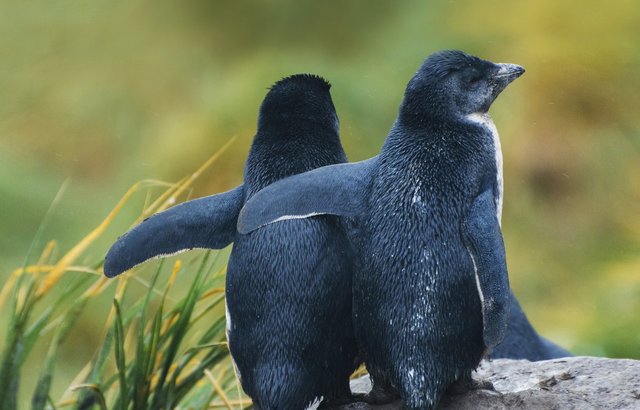
What we call the real world is not real at all. By that, I mean that society is based on agreements, concepts, and traditions that are somewhat arbitrary and are not based on reality. Yes, the way our world runs is mainly based on B. S. (belief systems).
From the number of days that make a week, what is considered fashionable at any given time, or the way we create and distribute money, is all based on beliefs that we make up with our intellect, on agreements that we create in order to relate with each other in an orderly way (i.e. driving on the right side of the road, becoming “adults” at 18 or keeping a good credit score). But these so often called laws, traditions, and customs, which we consider important (and often, unwittingly, set in stone), could be changed in 24 hours if we decided to. Yes, that includes the constitutions of all countries (including yours) and the rules by which your favorite sport is played. Do you know what cannot be changed? The only laws that are truly real, the laws of nature, like gravity, magnetism or thermodynamics.
Step back and start looking at your life to realize that most of the things you do during your day are not based on reality (but on inherited ideas that you were taught or picked up along the way with your education). One of these ideas is competition. I hear you saying: "but competition is everywhere in the natural world". Not really, competition is the exception these days, cooperation is the norm. Natural laws have been “pushing” for cooperation since the beginning of time because it confers an evolutionary advantage. Nature is mostly cooperative and definitely abundant.
At any given moment, the amount of cooperative (within the same species) and mutualistic (among different species) relationships in the natural kingdom is far greater than the number of competitive ones. This is a fact.
What do you think your body is? Look right in the mirror to admire an incredibly complex arrangement of cells cooperating with each other to form YOU. Approximately 30+ trillions of eukaryotic cells interacting with ten times more the number of prokaryotic cells in your intestines to help you synthesize vitamins and nutrients, digest your food, and protect you from pathogens among other things. It seems that these cells understood at some point that it is easier to thrive with cooperation.
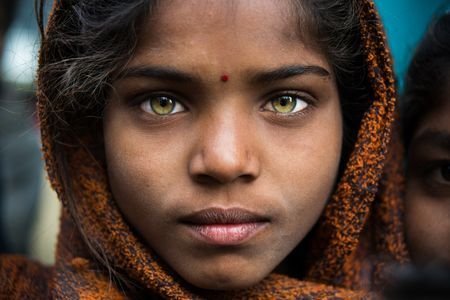
Carl Zimmer, a columnist for the New York Times, puts it like this: “the very fact that some 34 trillion cells can cooperate for decades, giving rise to a single human body instead of a chaotic war of selfish microbes, is amazing.” Indeed.
However, it was not always like that. Around 3.8 billion years ago there were only single cells floating around aimlessly in the so-called primordial ocean trying to survive independently, despite others, and competing for the same resources. Those were tough times, I imagine, for those cells. But they “figured something out”… the highly popular T.E.A.M. (together everyone accomplishes more) in some educational circles. Those cells started to associate with each other in ever-increasing degrees of complexity to form at first simple colonies, and much later highly specialized tissues which granted an almost unfair advantage to the organisms that featured them.
Ancient times were highly competitive in nature, but gradually cooperation took over…and ever since that time, it keeps finding its way into life forms because it makes thriving on this planet easier. Today, we see more cooperative relationships in the natural world than ever before, and the trend is going to continue as it is not just a custom or a tradition (subject to be changed), but a natural tendency, a law.
Cooperation is “sticky” in genetics (the memory of nature) because it facilitates organization, and this is advantageous. When an entity is organized (school, business, cell colony, pack of wolves, family) is able to perform a given task with increased efficiency and use fewer resources in the process. Just like five fingers can do a lot more together working as a unit than as isolated elements, we can employ cooperation to get organized and create synergies, which we know increase productivity. This is true not only in the modern world of business but also in nature. Competition among individuals to achieve a common goal is, therefore, wasteful compared with cooperation, and brings about lesser levels of organization and efficiency. But if you are thinking how beautiful your neighborhood looked after the last annual gardening competition, consider how much better it would be had all neighbors bounced back ideas and worked together to improve the community as a whole. Competition is not necessarily bad, it is just not as good as cooperation.
As an interesting fact, the entropy (a measure of disorder or “chaos” in a system) in our planet is not increasing (as it is in the universe as a whole) but decreasing due to the energy that the Earth receives from the sun. In other words, the evolution of life in our planet represents the transition from a high state of entropy (disorder) where very simple living creatures (cells) used to live in an independent and competitive manner with each other, to lower states of entropy (thus, higher organization) where modern-day creatures from all kingdoms interact in their ecosystems in ever-increasing cooperative and interdependent ways. The sun makes life possible on our planet and is, with its energy, increasing the level of organization in the natural world. Entropy is increasing in the universe, but not here on planet Earth...Thanks to the Sun. Perhaps that is why ancient cultures always referred to it as the “Father Sun.” In any given system, it takes energy to increase the level of organization and cooperation in it. Likewise, it also takes a higher understanding (en-light-en-ment) to go from competition and independence to cooperation and interdependence.
If you are thinking that all of this sounds good, but you do not buy this cooperative side of nature, I would ask you to ponder this a bit further. There is obviously killing in nature for survival reasons, but no lion would ever kill more than what is needed in the short term, no bird would pick up more worms that its chicks would probably eat, and no squirrel would store more nuts than what it deemed adequate to survive the winter. Why not? For one, because they do not have refrigerators to keep that food fresh, sure, but mainly because animals do not behave as if there is intrinsic scarcity in their ecosystems. Following their instinct, they know that different cycles of nature (day and night, spring and autumn…etc.) to which they are perfectly adapted, will bring what they need in time. When satisfied, the lion will leave the remainders of the pray for scavengers; the bird will fly away next morning knowing that there is plenty to go around; and the squirrel will never attempt to collect an overflowing number of nuts in an attempt to build a “Nut Empire” (to later teach other squirrels how to do the same in a soon-to-expire 999$ weekend seminar).
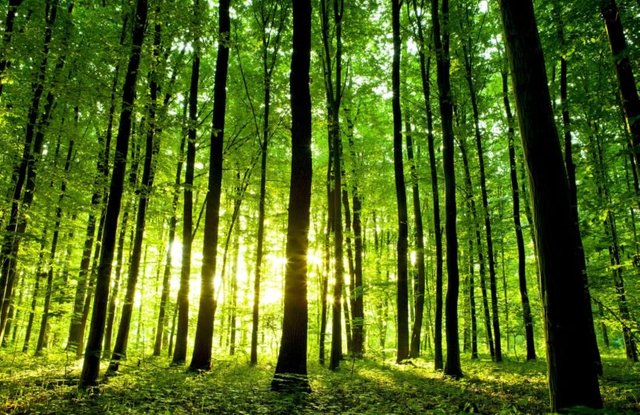
Consider the 30 years of research of ecologist Suzanne Simard. "A forest is much more than what you see," she says, “trees talk, often and over vast distances.” Go and watch her amazing TED Talk "How trees talk to each other in a healthy forest." Let me give you some highlights:
“...and when one seedling is under stress, if it is small or shaded or nutrient poor, other plants send more carbon...without hurting these source-plants...these connections are crucial to our wellbeing. They are not easily seen, but they are real.”
We see it everywhere in nature. Unless an ecosystem is altered by humans or a sudden environmental change (e.g. flood, fire, meteorite… etc.), natural communities tend to gradually increase their complexity until they reach what is called a "climax" state, a state of dynamic equilibrium for that particular location in which biodiversity and mutually beneficial interactions are maximized. When left alone, ecosystems tend to create more complex and cooperative environments where abundance is sustainable and optimized. Stop mowing your grass for two years and see what happens right before your eyes.
Our evolutionary history is the ultimate in networking and cooperation. "...We may safely say that mutual aid is as much a law of animal life as mutual struggle; but that as a factor of evolution, it most probably has a far greater importance, inasmuch as it favors the development of such habits and characters as ensure the maintenance and further development of the species, together with the greatest amount of welfare and enjoyment of life for the individual, with the least waste of energy." —P. Kropotkin
I believe the phrase “survival of the fittest” does not convey necessarily survival of the strongest or most competitive, but survival of the most adaptable to ever-changing circumstances in the environment.
“The real rise to power of Homo sapiens began only about 70 thousand years ago, and then things happened very quickly. In an ´evolutionary flash´, Homo sapiens spreads from East Africa to conquer the whole planet, drives to extinction all the other humans around (Neanderthals, Homo erectus…etc.), and it goes on to become the dominant species of the planet. What happened to us 70 thousand years ago? We got a special superpower, the ability to cooperate in very large numbers.” Yuval Noah Harari (author of Homo Deus). Had we been able to cooperate with other human races back then, we might have been able to experience the coexistence of Homo sapiens with other species.
To cooperate with others might not be the only way to increase your adaptability and resourcefulness, but is certainly one of the main strategies in nature. Animals and creatures find their niche, get good at it, and try to cooperate with others (sometimes in not-so-obvious ways) to preserve the ecosystem that is sustaining them. Without that built-in tendency, living communities would eventually stop thriving and start decaying, but that is not what we see in nature; we see ecosystems grow more complex and abundant when left alone.
THE SKY IS THE LIMIT
Only a few miles away from San Francisco after crossing the Golden Gate, you can find the redwood forest of Muir Woods, where you can find one of the two species of sequoias that grow in North America. This type of tree can grow well over 300 feet tall, giving it the controversial title of being the tallest tree in the world (some say is actually the Eucalyptus regnans of Australia). How do you think these sequoias are able to grow so tall when their roots are in fact quite shallow? They are connected underground. They hold each other by the roots! They manage to stay standing by extending their shallow root system to a diameter of 50 feet or more and tangling the roots into grooves and crevasses that provide additional strength.
How do you think you are able to digest your food or generate energy? Thanks to the many millions of bacteria that live in your gut and inside your cells (mitochondria).
What is one of the main contributing factors to the formation of clouds keeping your shower running and our planet cooler? A compound called DMS (Dimethylsulfide), the most abundant biological sulfur compound emitted to the atmosphere. This molecule is synthesized by phytoplankton in the open ocean. Without it, the formation of clouds would be much more difficult even with levels of 100% humidity. From outer space, clouds are these pretty white surfaces that among other things help reflect sunlight back to space (cooling down the surface). Without DMS, we would have fewer clouds and a hotter planet...
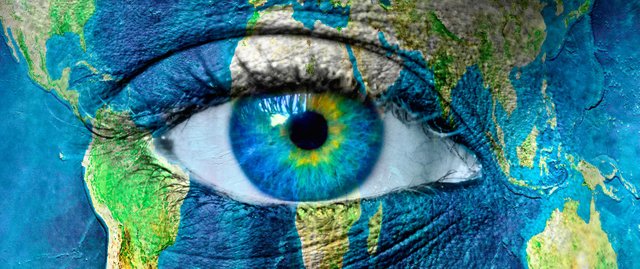
Life on planet Earth is a delicate and complex matrix of (mostly cooperative) relationships that constantly recycle materials and contribute to stabilizing conditions in every ecosystem. From the presence of mushrooms in the roots of trees that help them obtain hard-to-get minerals in exchange for nutrients, to the honeybees that pollinate plants and feed on their pollen, the "I- scratch-your-back-you-scratch-mine" approach is everywhere in nature. This is not necessarily altruistic, but it is cooperative, it is win-win, and it has been working marvelously for a very long time. But we, humans, do not understand the rules of the game, we lack this cooperative perspective and therefore tend to negatively impact this matrix of life and be a threat to sustainability in most ecosystems. We only look after us, and we do it in a very shortsighted way. We exploit the soils, fish until fish stocks are gone, and pollute our own rivers in the name of making business happen. Even worse, we are capable of abusing other humans.
Growing up in the 80s I remember walking to school and wondering what color the river would be that day. I lived in a small town with lots of textile industries which accounted for the surprise every morning. Unfortunately, I am certain that somewhere on the planet the same thing is still going on... Unlike humans, animals and creatures from other kingdoms do not act as if they own the environment, but as if they are an integral part of it; as if their life depended on it (as it does).
“When a flower does not bloom you fix the environment in which it grows, not the flower.” Alexander Den Heijer
It is true that survival is ingrained in all living creatures, and when an animal feels rightfully threatened it will attack others. Without a doubt, circumstances do matter. They can change what is an otherwise a cooperative creature that lives in harmony with its surroundings to a selfish animal that looks only to satisfy its needs. When there is true scarcity (not artificially created as we experience in our societies), both behavior and even the appearance of an organism can be altered drastically...Compare the grasshopper, which “sports long legs and wings, walks low and slow, and dines discreetly in solitude. - Neuroscientist Steve Rogers says – with the locust, which scurries hurriedly and hoggishly on short, and joins hungrily with others to form swarms that darken the sky and descend to chew the farmer’s fields bare.”
You might be surprised to realize that grasshopper and locust are in fact the same species, the same insect! When faced with a hostile environment (such as hunger or crowding) certain grasshopper species can morph within days or even hours from their gentle hopper states to the aggressive and selfish locust form. When a member of the desert locust of Africa moves too slowly amid its maniacal scourge, the other members directly behind might eat it. These locusts, by the way, can also return quickly to their original form. It happens because the same genes can be “read” in multiple ways to quickly adapt to the prevailing circumstances and thus produce a different phenotype (the composite of an organism's characteristics or traits): grasshopper or locust. It is not so much the genes that matter, but the epigenetic (“above” genetic) signals from the environment.
Basically, abundant conditions create grasshoppers, scarcity, and competitive circumstances locusts. Aren't we normally much more kind and patient on the driving wheel on Sundays than during rush hour on a Monday? I sure I am. Next time somebody flips you off for no reason, just know that person is highly stressed (at least in their mind), and probably in “locust mode.”
In nature, where abundant conditions are the norm, cooperation rules. In our societies, however, where artificial (monetary) scarcity is fostered, competition is not only prevalent but encouraged as a way of living, as a way to “make it”, to “succeed”, which in turns creates further scarcity.
We should be better observers and take note of nature where most species live in dynamic equilibrium among themselves and contribute, through cooperation, to the abundance and complexity of their ecosystems.
But, is nature just a self-perpetuating "machine" where, as long as the conditions are favorable species cooperate in order to thrive? Given the state of affairs in our world, I would be happy having such a model as the ideal to strive for, however, there is more going on in nature than just mutualistic relationships for selfish purposes.
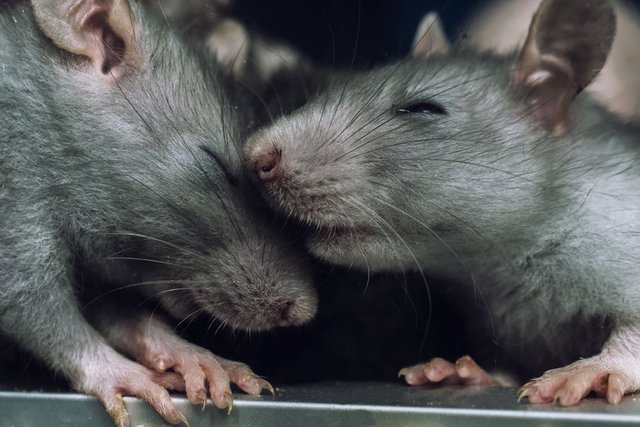
Picture this, a rat forsaking a piece of chocolate to save a drowning companion. Is it possible? Yes, it is. Rodents feel empathy and will go out of their way to save a friend even when that implies to lose something of value (chocolate!). Some argue that rodents help because they crave companionship, not because their fellow rodents are suffering; but a new study from Kwansei Gakuin University in Japan puts those doubts to rest. The research team devised an experimental box with two compartments. In one of them, a rat was forced to swim in a pool of water. The only way the rodent could escape was if a second rat, sitting on a dry platform, open a door separating the two sides. In most occasions, the rats were helping their fellow rodents. Peggy Mason, a neurologist from the University of Chicago, says “not only does the rat recognize distress, but he is even more moved to act because he remembers being in that situation”- she adds - “humans are not helping purely because mom taught us to help. In part, we help because it’s in our biology.” Cooperation, and perhaps altruism too, is an evolutionary advantage.
Under the coldest and hardest conditions on the planet, the Emperor penguins have developed a way to not only stay warm and survive but also be able to incubate their eggs during the harsh winters of Antarctica. They crowd together as a team in one of nature´s most famous huddles to keep the members at the inner center warm. The penguins on the outside of the circular huddle withstand freezing winds and wait patiently for their turn to move inside. This technique is so effective that the temperature inside the circle can get close to 40 degrees Celsius, around 80 degrees warmer than the temperature outside, so they need to break their formation from time to time to cool off! Penguins depend on each other; the only way they can survive is by working together, by cooperation with each other. It is a beautiful thing to see in action, and one of a plethora of examples.
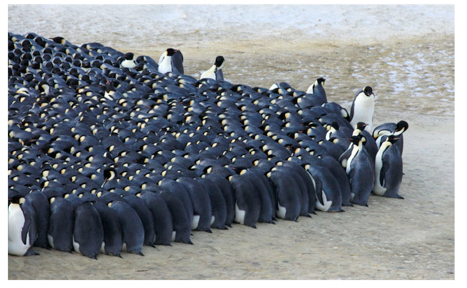
IS OUR PLANET ALIVE?
“The Gaia hypothesis, also known as the Gaia theory or the Gaia principle, proposes that living organisms interact with their inorganic surroundings on Earth to form a synergistic and self-regulating, complex system that helps to maintain and perpetuate the conditions for life on the planet.” A chemist, James Lovelock, asked himself what was the main characteristic of life, - How could we define it? - He thought. Not an easy question to answer, but he realized that all living things have something in common: the ability to self-regulate themselves. Therefore, he proposed that our planet is also alive. Gaia, a Greek name for Earth as a goddess, was the name he gave to his hypothesis.
Gaia, our amazing planet, is a self-regulating mega ecosystem where cooperation is very predominant. This natural tendency fosters the abundance and resilience that we often see in nature, so much so that, even when faced with catastrophic events and mass extensions (a total of five in our history), Gaia is able to rebuild herself and create sustainable and thriving environments time and time again.
It is time to separate fact from fiction, to distinguish natural laws from artificial man-made customs and traditions that do not serve us. Whether we like it or not, we are part of nature, and therefore, the intelligent thing is to align ourselves with its principles if our preferred choice is to thrive.
Competition among ourselves is creating artificial scarcity in our societies and promoting servitude within our ranks (not to mention stress and violence). Whereas, in nature, cooperation results in abundance and freedom for a great majority of creatures. Just like the eagle is meant to fly and explore, and the dolphin to swim and play, we humans are not meant to “earn” a living, that is, to work our whole life under some kind of pressure in hopes of one day we able to “retire” and start (finally) living. We are meant to live life from the start, to learn from our elders, and to thrive; not simply “become competitive and productive” in economic terms. It is when we enjoy true freedom and abundance, that we can fully develop our minds and souls, and deepen our understanding of the universe and ourselves so that we can reconnect with each other and move our civilization forward. This is what we are meant to do, anything else is unnatural and depressing. The good news is that we have the means and an incredibly abundant planet to do so... if we implement the right paradigm, that is.
A PALE BLUE DOT
“Look again at that dot. That's here. That's home. That's us. On it everyone you love, everyone you know, everyone you ever heard of, every human being who ever was, lived out their lives. The aggregate of our joy and suffering, thousands of confident religions, ideologies, and economic doctrines, every hunter and forager, every hero and coward, every creator and destroyer of civilization, every king and peasant, every young couple in love, every mother and father, hopeful child, inventor and explorer, every teacher of morals, every corrupt politician, every "superstar," every "supreme leader," every saint and sinner in the history of our species lived there-on a mote of dust suspended in a sunbeam...
The Earth is a very small stage in a vast cosmic arena. Think of the endless cruelties visited by the inhabitants of one corner of this pixel on the scarcely distinguishable inhabitants of some other corner, how frequent their misunderstandings, how eager they are to kill one another, how fervent their hatreds. Think of the rivers of blood spilled by all those generals and emperors so that, in glory and triumph, they could become the momentary masters of a fraction of a dot...
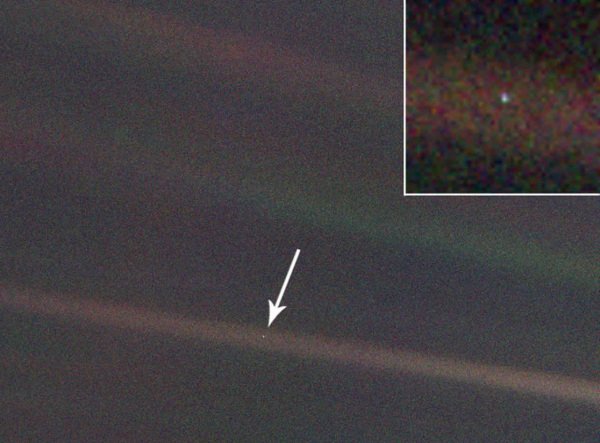
There is perhaps no better demonstration of the folly of human conceits than this distant image of our tiny world. To me, it underscores our responsibility to deal more kindly with one another, and to preserve and cherish the pale blue dot, the only home we've ever known.” Carl Sagan
There are between 100 and 200 billion galaxies in the universe. These are mind-blowing numbers. But listen up, there are at least 1 trillion cells in your body. That is 800 billion more cells! These cells conform your body, day in and day out, and are constantly cooperating with each other to maintain a cohesive structure, and execute millions of biochemical processes every minute without skipping a bit. We are the product of cooperation at its best, it is in our genes, it is in every one of our cells. We just need to embrace it fully and make it the norm, not the exception. Let's be grasshoppers. From the individual level to the corporate or governmental, we should take note of nature and put our innovation and technology to work in the right direction, which is prosperity and freedom, by trusting each other and working together.
And, for those who still believe that those rats were just being selfish and not truly caring for their cage mates, the lesson is clear either way: the end justifies cooperation.
----
This is a chapter from the upcoming book "Cooperation Paradigm."
A New Paradigm is upon us, a simple set of principles with the power to change the minds and hearts of people, a paradigm that will create abundance, freedom and unity.
JOIN THE PARADIGM!
www.CooperationParadigm.com